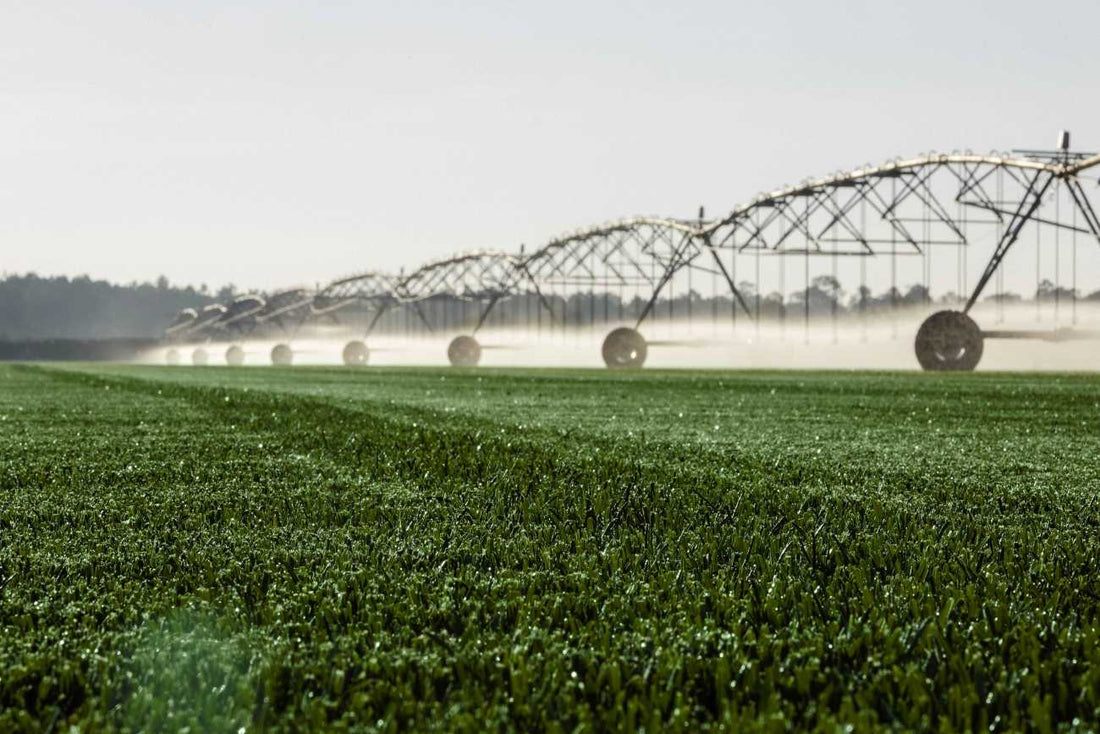
5 Common Challenges in St. Augustine Grass Care
Jamie TedderYou step outside one morning, coffee in hand, expecting to see the usual lush, green carpet of your St. Augustine lawn—only to find yellowing patches, thinning areas, or stubborn weeds taking hold. It’s frustrating, especially when you’ve put time and effort into maintaining your yard.
St. Augustine grass is a favorite for Southern lawns due to its thick, cushiony growth and rich color. It’s built to handle heat and humidity, and several varieties like Scotts® ProVista, CitraBlue®, Floratam, Palmetto®, Seville™, and Viridian™ are tailored to different lawn goals. Still, even the best lawns can hit rough patches, and you know that keeping St. Augustine grass at its best takes more than occasional mowing and watering.
In this guide, we’ll explore the most common challenges with St. Augustine grass and share practical, homeowner-tested tips to help you restore and maintain that lush, healthy look.

Challenge 1: Watering
Watering on Installation Day
Proper watering on installation day is crucial for helping your new St. Augustine grass—whether sod or grass plugs—start strong. Immediately after installation, water the entire area thoroughly. The soil beneath the grass should feel consistently damp but not waterlogged when you step on it. This first deep watering encourages initial root-to-soil contact, which is essential for root development.
Watering in the First 10-14 Days
During the first two weeks, your new grass will need frequent, light watering to keep the soil consistently moist without causing runoff.
-
Frequency: Water 2-6 times per day.
-
Duration: Apply water in short bursts of 4-6 minutes each session.
The key is to prevent the soil from drying out without being waterlogged.
Ongoing Watering After Establishment
Once the roots have anchored into the soil, which usually happens after two weeks, you can reduce watering frequency and switch to a deeper, less frequent routine.
-
Weekly Water Needs: Apply 1-1.5 inches of water per week, including rainfall.
-
Watch for Stress Signs: If the turf appears dry, crunchy, or wilted, increase irrigation frequency slightly.
Adjust watering based on temperature, sun exposure, and soil type—sandy soils may require more frequent watering than clay.
Challenge 2: Mowing
Mowing too early can damage newly installed St. Augustine grass, so make sure to wait until the lawn is ready.
Check for Root Establishment: Around 14 days after installation, gently tug on a few sections of sod. If the grass lifts easily, the roots haven’t fully anchored, and you should wait a few more days. If it resists being pulled, it's ready for its first mow.
Ideal Mowing Height for St. Augustine Grass
Avoid mowing your St. Augustine grass too soon after installation, as it can damage the developing roots. Around the 14-day mark, gently tug on a few sections of sod. If the grass lifts easily, it's not ready—give it more time. If there's resistance, the roots have begun to establish, and it’s ready for its first mow.
For a healthy lawn, maintain your St. Augustine grass at a height of 3.5 to 4.5 inches. Mowing at this height encourages deeper roots, better moisture retention, and helps shade out weeds. Be sure not to cut more than one-third of the blade height in a single mowing to avoid stressing the grass.
Challenge 3: Proper Fertilization Schedule
When it comes to maintaining your St. Augustine grass lawn, fertilization plays a crucial role. Here's a recommended schedule:
Early Spring: Begin fertilizing in early spring, just as your grass starts to green up. This first application provides the nutrients needed to break dormancy and support strong early-season growth.
Late Spring: Apply a second round of fertilizer in late spring to maintain momentum. This feeding promotes vigorous growth, improves color, and helps your lawn handle the summer heat.
Fall: Don’t skip fall fertilization. Applying fertilizer in the fall helps strengthen roots, improve stress tolerance, and prepare your St. Augustine grass for winter dormancy—ensuring a healthier comeback next spring.
Choosing the Right Fertilizer
Selecting the right fertilizer is essential for supporting healthy St. Augustine grass. Choose a dry granular fertilizer suitable for Southern lawns, as these are generally formulated to meet the needs of warm-season grasses like St. Augustine. Products such as Scotts® Southern Turf Builder are designed for Southern climate conditions and provide a balanced blend of nutrients that promote strong growth, vibrant color, and overall lawn health. Always check the label to ensure compatibility with St. Augustine grass before applying.
Challenge 4: Winter Care
As cooler weather sets in, it's important to adjust your lawn care routine to support your St. Augustine grass through dormancy. Growth naturally slows during the winter months, so reduce mowing frequency to avoid unnecessary stress on the grass. Likewise, your lawn will require less water. Adjust your irrigation schedule accordingly—overwatering during this period can increase the risk of root rot, fungal diseases, and other moisture-related issues.
Protecting Against Cold Weather
If you live in an area where frost or freezing temperatures are possible, take steps to shield your lawn from cold damage. When frost or a freeze is in the forecast, cover the grass with frost blankets or a light layer of straw. This added protection can help preserve your lawn’s health and prevent injury to the dormant grass, ensuring a quicker recovery once spring returns.
Challenge 5: Dealing with Newly Planted St. Augustine Sod
Newly installed St. Augustine sod requires careful attention during its early growth phase to ensure successful establishment. Proper watering, mowing, and foot traffic management are critical in the first few weeks. Keep the soil consistently moist—without overwatering—to encourage strong root development.
Transitioning to Standard Maintenance
As the sod begins to take root and shows signs of new growth, gradually shift to your regular lawn care routine. Start by reducing the frequency of watering while increasing the duration to promote deeper root growth. Once the sod is firmly rooted, you can begin mowing and following the standard maintenance schedule outlined earlier. A fully established lawn will become more resilient and easier to care for in the long term.

Frequently Asked Questions (FAQs)
1. How often should I water St. Augustine grass?
Newly installed sod needs frequent watering—2 to 6 times daily in short intervals—for the first 10 to 14 days. Once established, St. Augustine grass typically requires 1-1.5 inches of water per week.
2. When is the best time to fertilize St. Augustine grass?
Fertilize in early spring as the grass begins to green up, again in late spring to support growth, and once more in the fall to prepare for winter dormancy.
3. What mowing height is best for St. Augustine grass?
Maintain a mowing height of 3.5 to 4.5 inches. Mowing too short can stress the grass, making it more vulnerable to drought and weeds.
4. How do I know when my newly laid sod is ready for mowing?
Wait about 14 days after installation, then gently tug on the sod. If it resists, roots are establishing and it’s ready for its first mow. If it lifts easily, give it more time before mowing.
5. Can I plant St. Augustine grass in the winter?
Yes—Florida’s mild climate makes it possible to plant St. Augustine grass nearly year-round, including in winter. While growth slows in cooler months, sod can still establish as long as the soil isn’t frozen.
Why Consistent Lawn Care Matters
Consistency is the key to maintaining a healthy, green St. Augustine grass lawn. By applying the tips and best practices outlined in this guide, you’ll be well-equipped to overcome common challenges and enjoy a healthy, lush lawn that elevates your outdoor space. Whether you’re navigating winter care, managing newly planted sod, or fine-tuning your regular maintenance routine, staying proactive makes all the difference.
At Bethel Farms, we’re here to help you succeed. Our premium selection of St. Augustine sod grass—including Scotts ProVista, CitraBlue, Floratam, Palmetto, Seville, and Viridian—is designed to meet a variety of lawn needs and growing conditions.
Ready to grow the lawn of your dreams? Explore our sod grass for sale and get expert guidance every step of the way. Visit the Bethel Farms website today.


